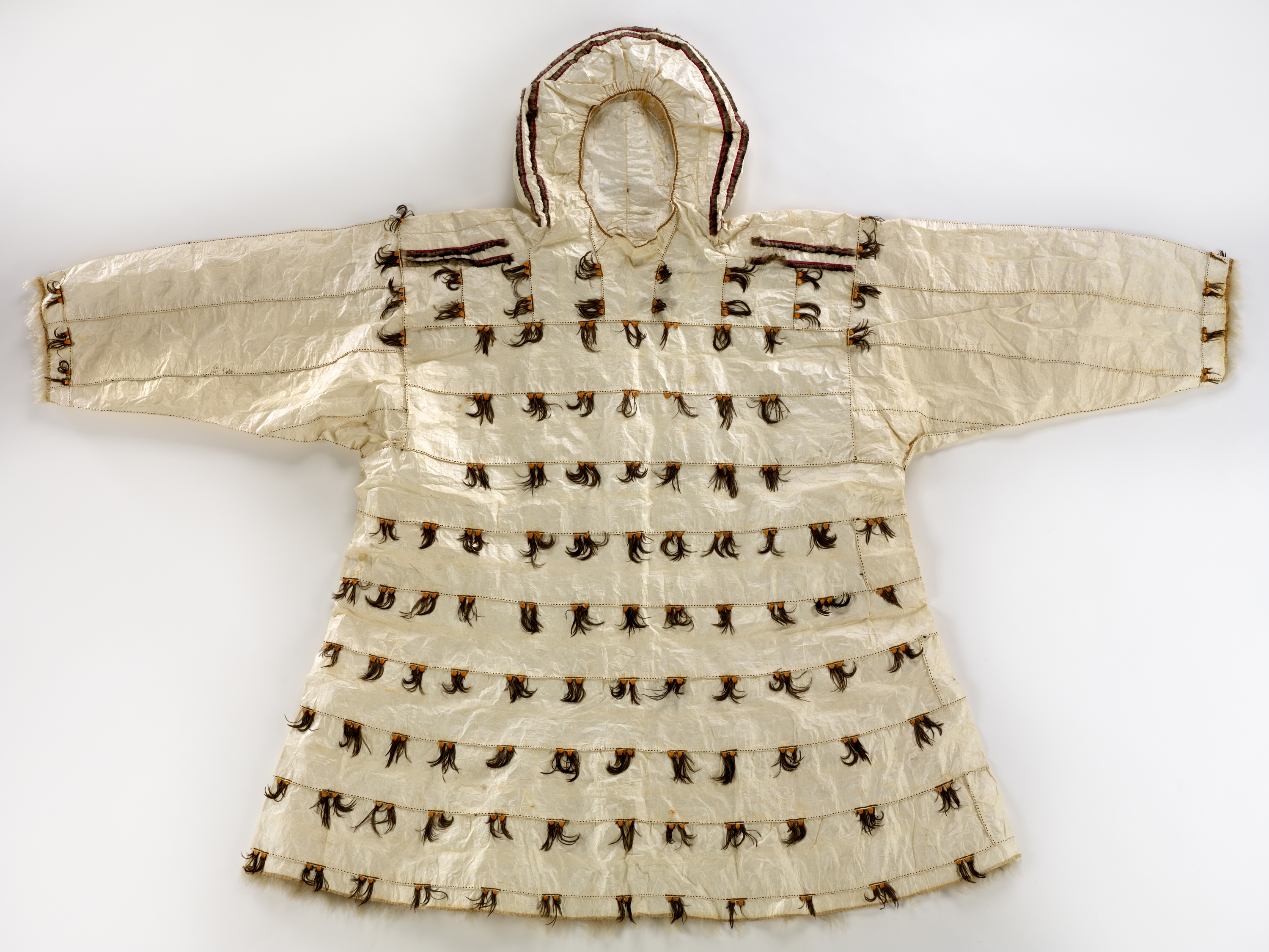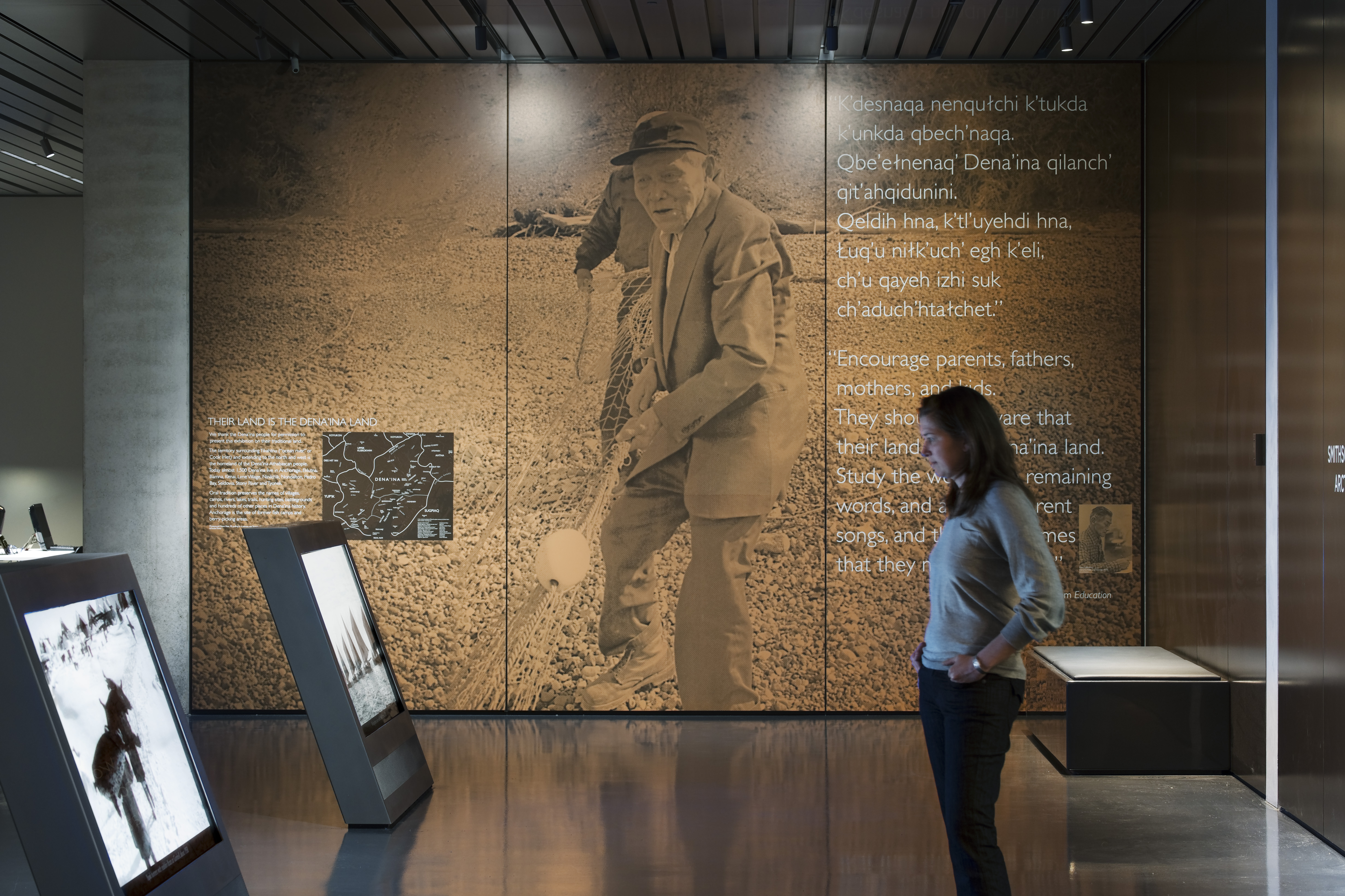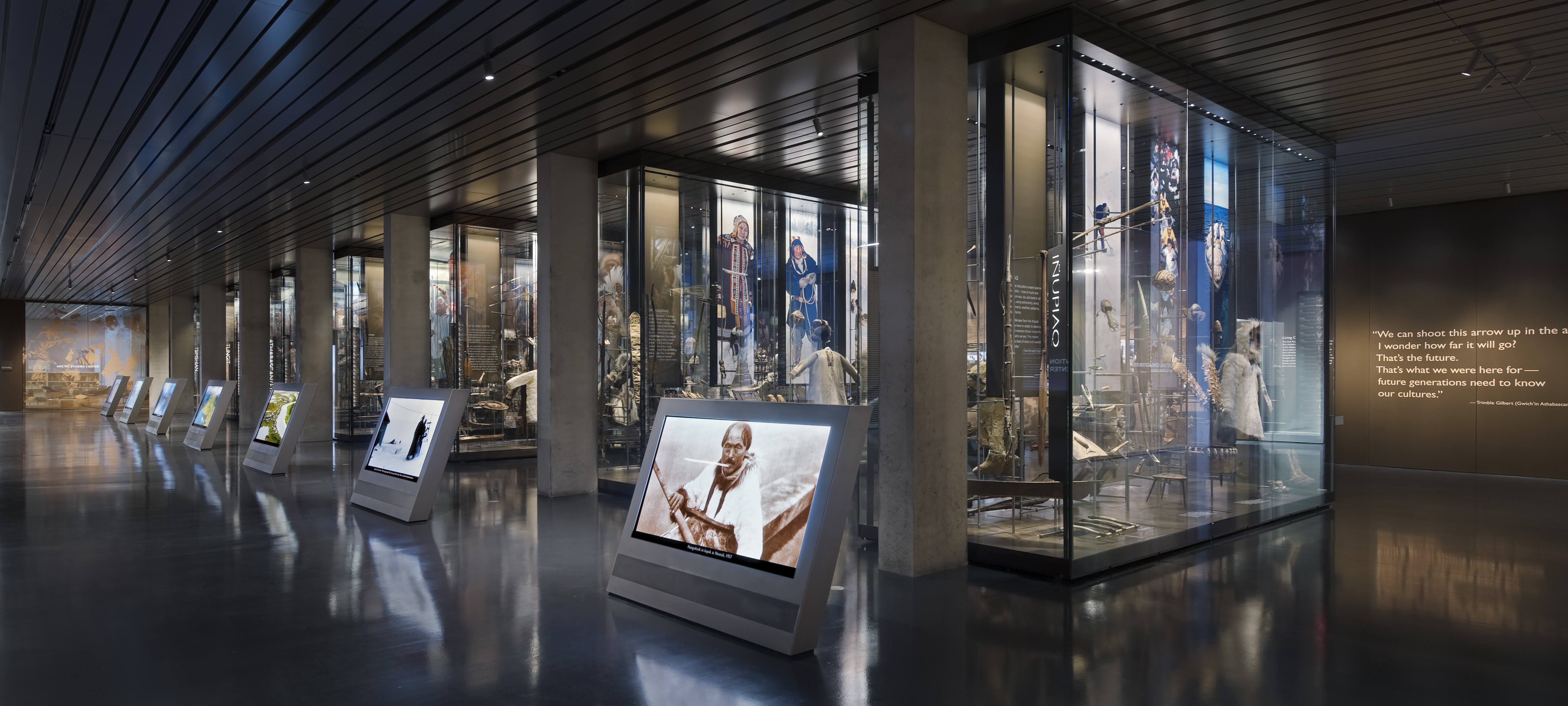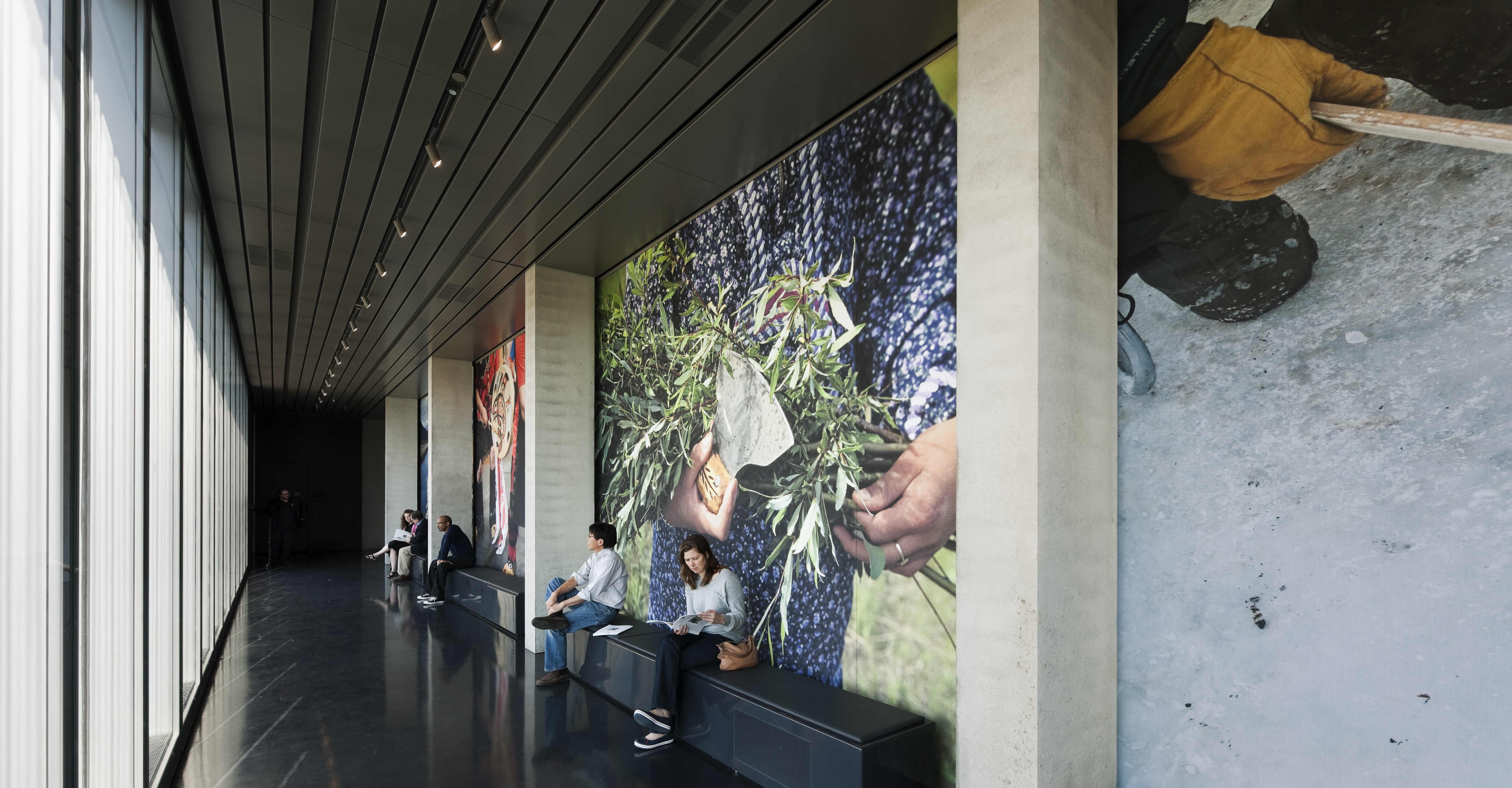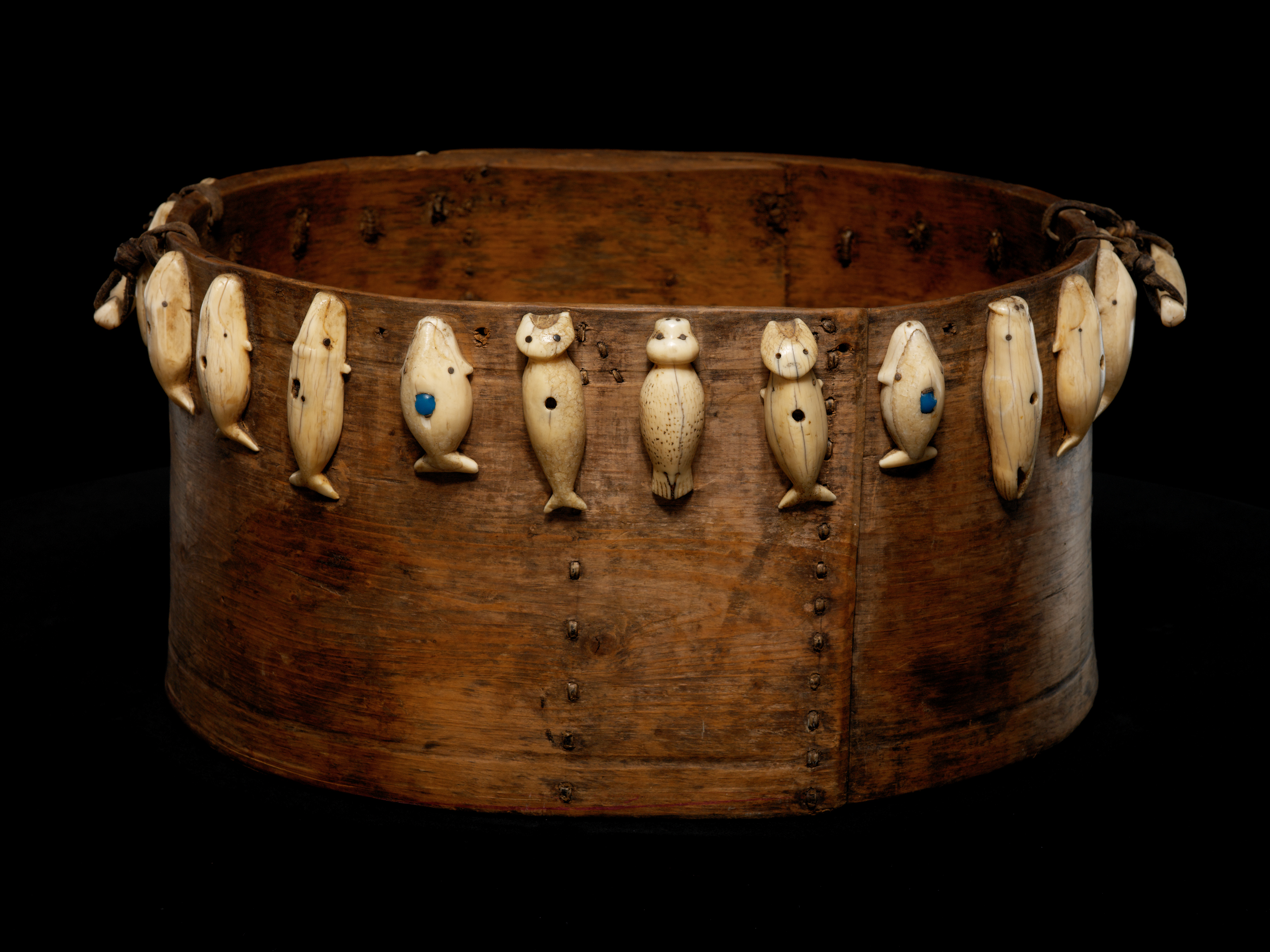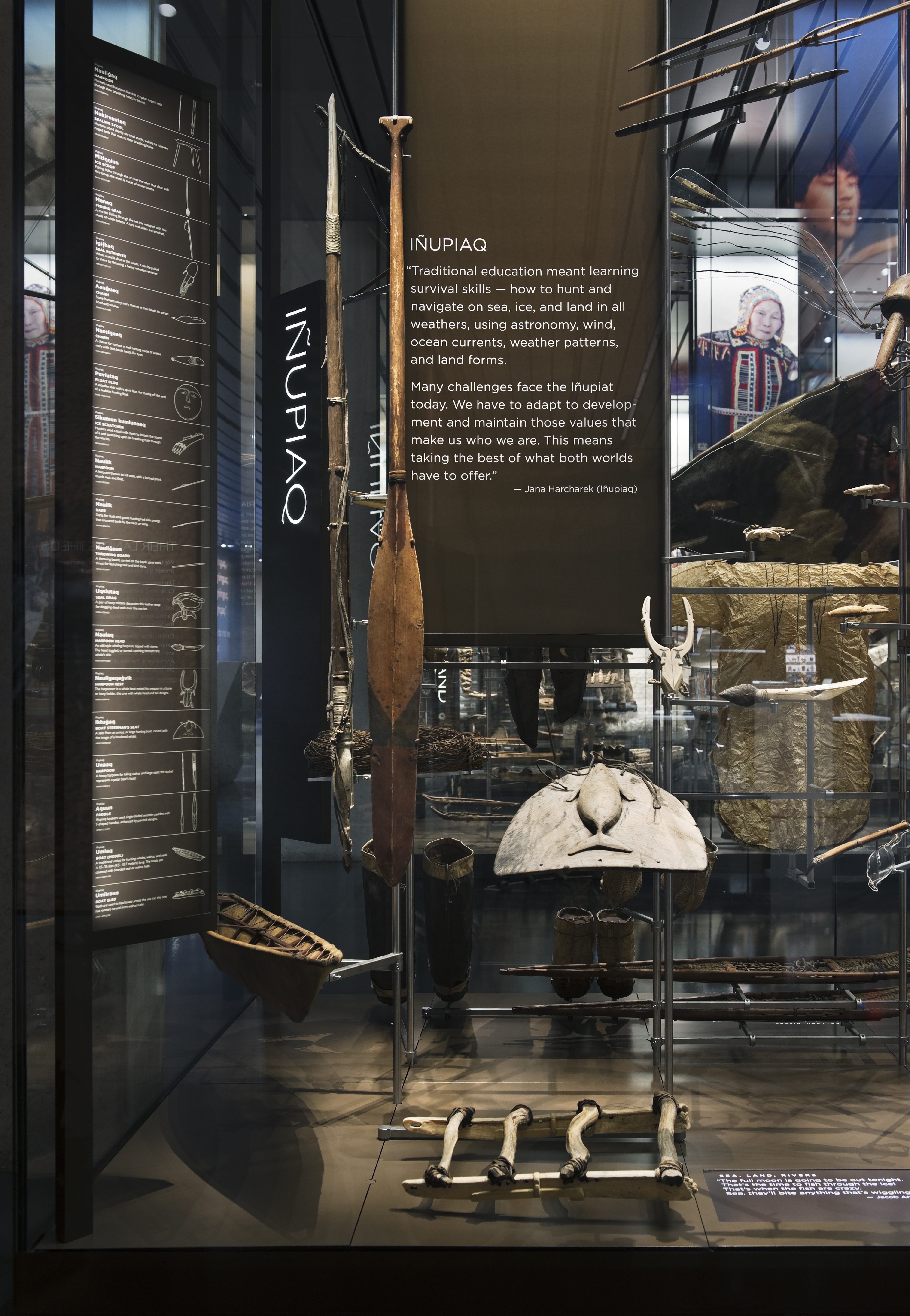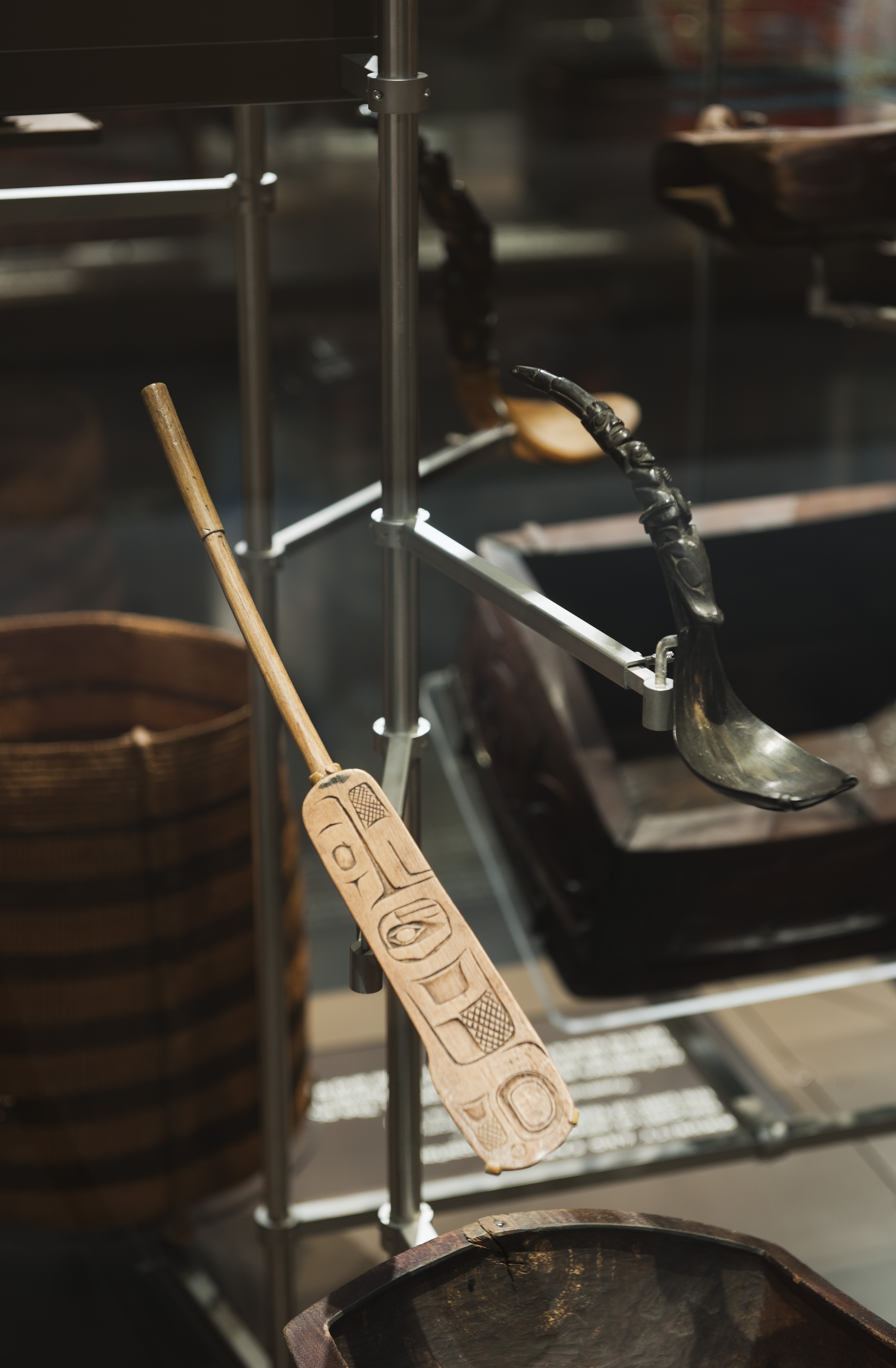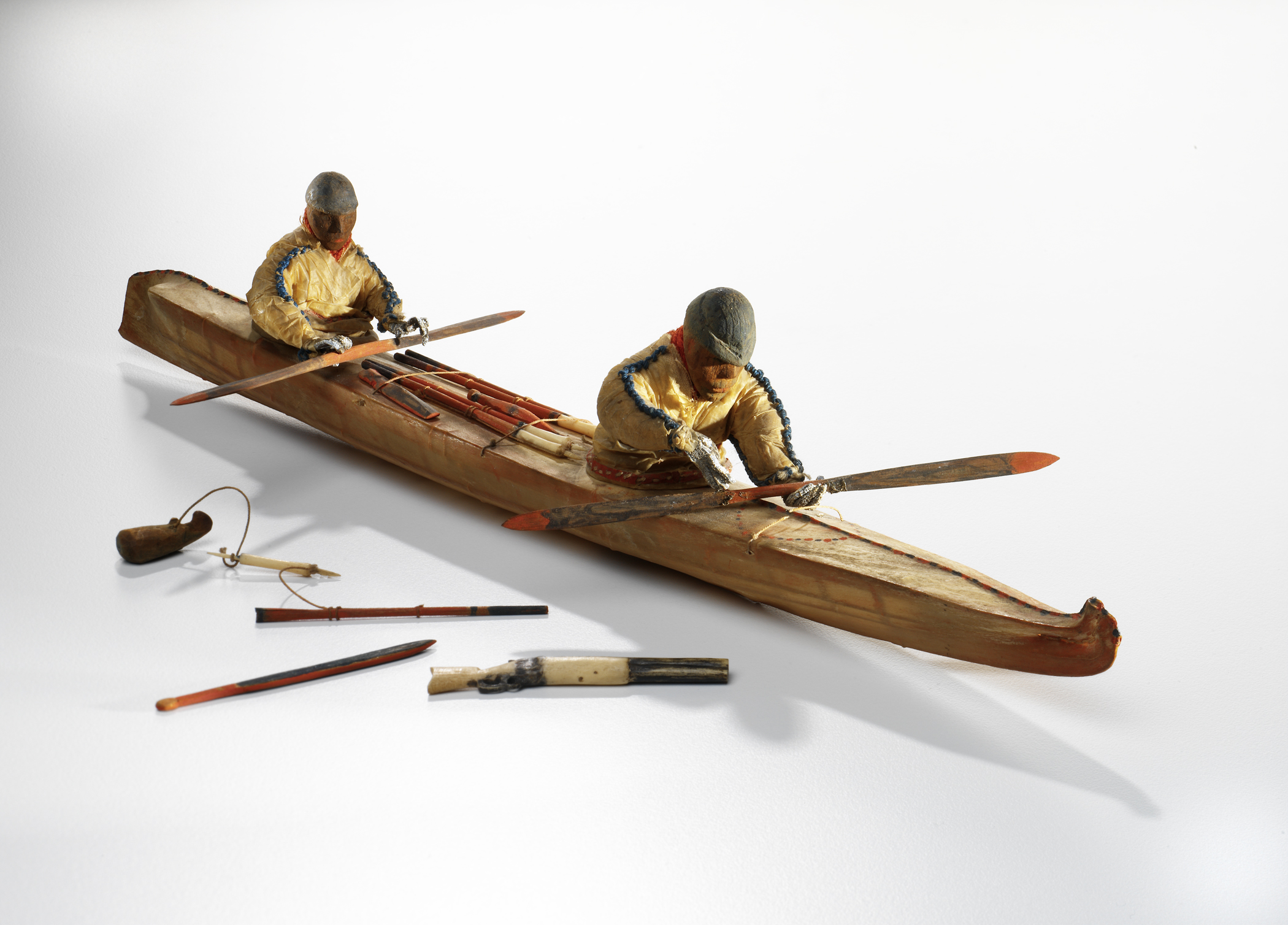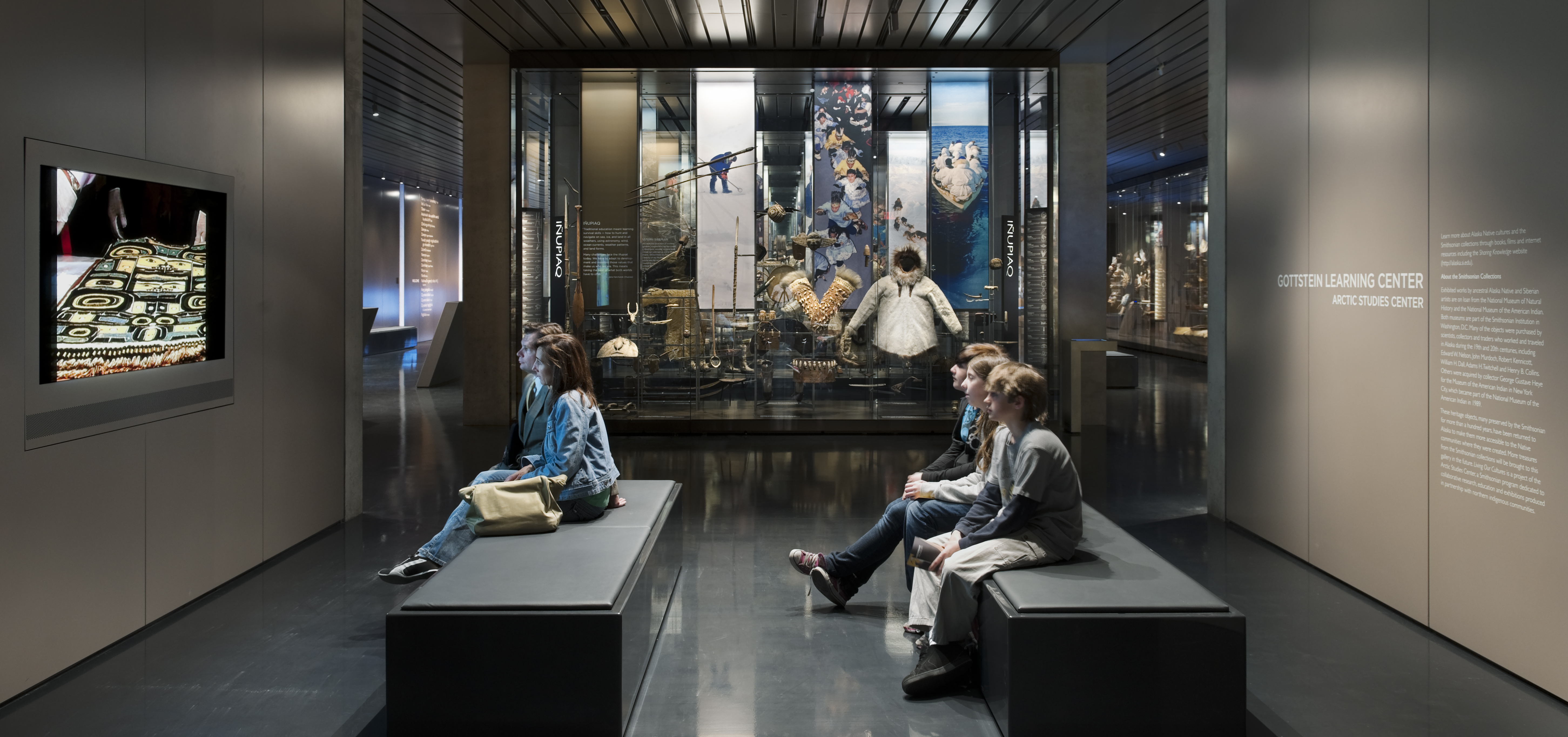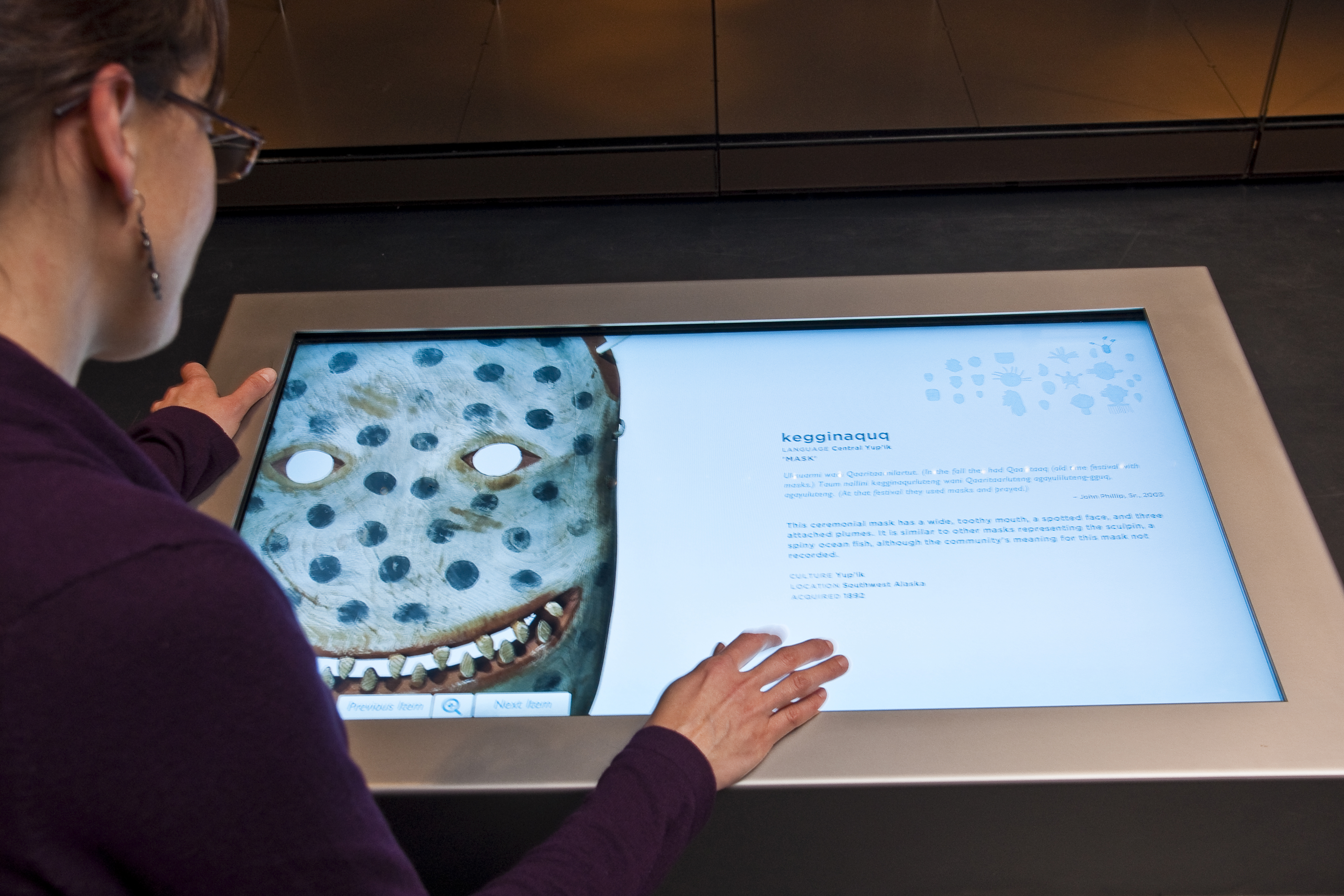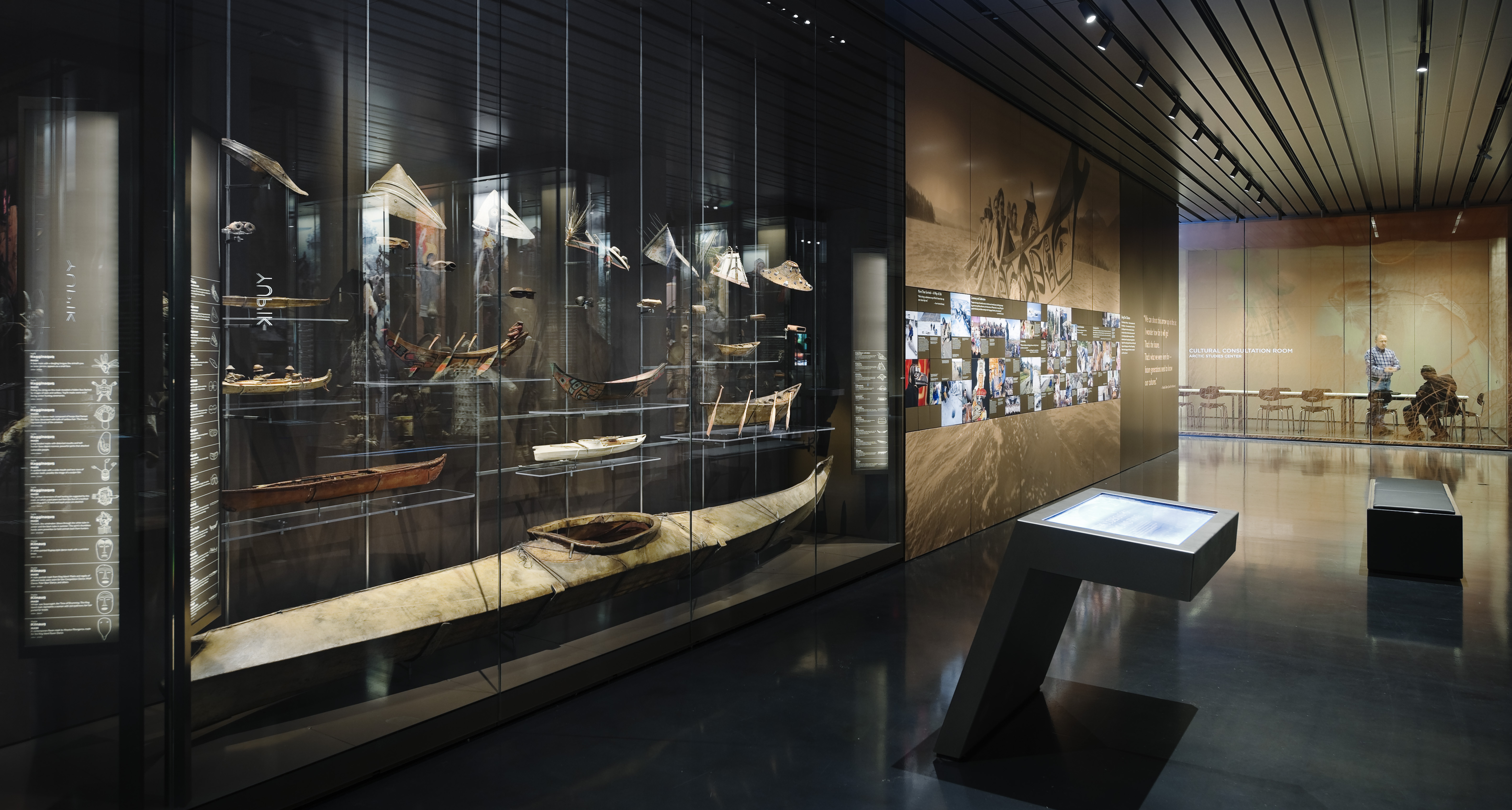Smithsonian Arctic Studies Center

LIVING OUR CULTURES, SHARING OUR HERITAGE: THE FIRST PEOPLES OF ALASKA
In the largest and longest loan made by the Smithsonian Institution, the Living Our Cultures exhibition has brought more than 600 Alaska Native cultural heritage pieces to their homelands and provides access for hands-on study by Alaska Native Elders, artists, educators and scholars. These cultural and historical treasures are exhibited for visitors in the Smithsonian Arctic Studies Center gallery at the Anchorage Museum.
The exhibition features text and videos with information and insights from Alaska Native experts. Videos feature community representatives and include archival and contemporary photographs and film footage of life in Alaska. Visitors can learn more about the exhibited pieces through touch screens: They can zoom in on a photo of an object and scroll through more information, such as related oral histories and archival images. A 3-D sound art installation immerses visitors in the Arctic through recordings of Alaska Native storytellers and sounds from the natural environment.
In addition to its gallery space, the 10,000-square-foot center encourages collaboration by providing a workshop space and community meeting space where Alaska Native Elders, artists, educators and scholars to research and create with heritage objects from the exhibition.
The Arctic Studies Center, established in 1988, is a federal research and education program focusing on peoples, history, archaeology and cultures across the circumpolar North. The center is part of the Smithsonian Institution's National Museum of Natural History. In 1994, the Center partnered with the Anchorage Museum to open an Anchorage office.
View the Smithsonian Arctic Studies Center Exhibition video:
Smithsonian Arctic Studies Center Learning Lab
The Smithsonian Arctic Studies Center offers free educational resources from the exhibition and from ongoing collaborative research and public programs on the Learning Lab site: Smithsonian Arctic Studies Center in Alaska. The site provides text, photographs, illustrations, instructional videos, webinar videos and education units about Alaska Native cultures, arts, lifeways and issues. Teachers, students, parents and lifelong learners can utilize these resources to teach and learn online, in a classroom or at home.
Featuring more than 40 collections in four categories, the content was created in collaboration with Alaska Native Elders, artists, educators and scholars. The first section teaches about the Native cultures of Alaska through short essays, contemporary and archival photographs with detailed captions, maps, and objects from the Smithsonian collections with Elders discussions and curator-written historical summaries.
The Distance Learning section offers education units, each with a teacher’s guide, lessons, answers and activities. The units include short essays, community photographs, Smithsonian collection objects and videos, all with detailed information relating to the lessons.
In the Community Videos section, viewers can learn from Alaska Native experts about their cultural values, languages and arts, including detailed instructions on working with fish skin, porcupine quill, grass and more.
The Conversations section provides edited webinar videos featuring discussions by Alaska Native and Canadian Inuit speakers about important subjects and issues, along with ideas and examples about how to act with regard to Indigenous peoples and their heritage.
